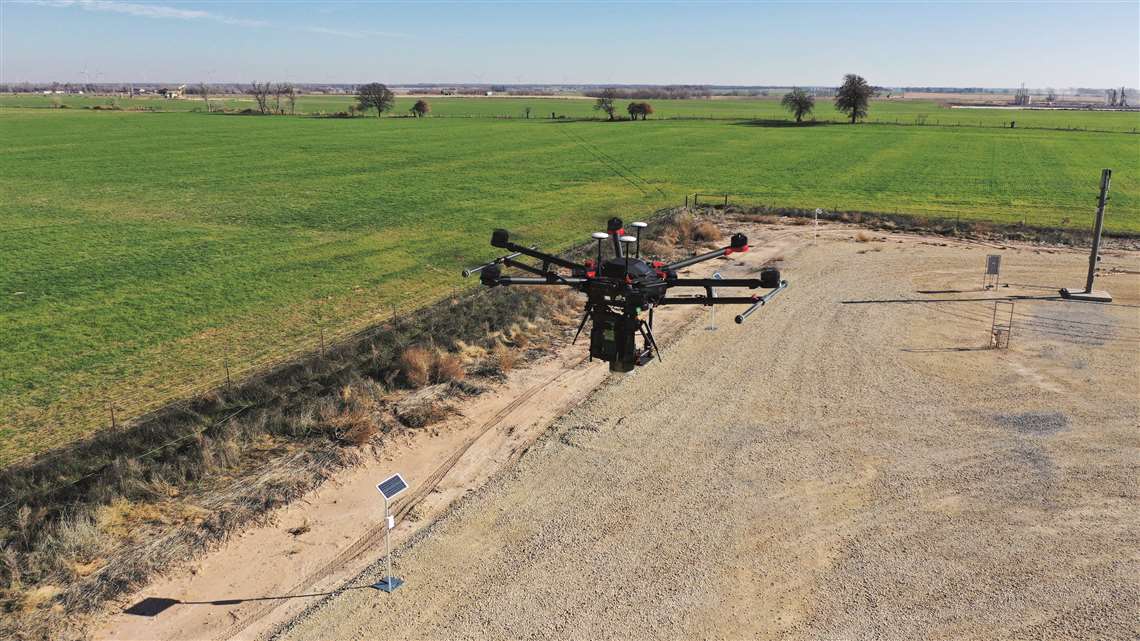Compression monitoring options plentiful
May 04, 2021
 One example of monitoring technology that can aid a gas compression operation is Lumen from Baker Hughes. Lumen features a drone for over-air monitoring. The drone has an optical gas imaging camera for detecting the heat signature of a methane leak.
One example of monitoring technology that can aid a gas compression operation is Lumen from Baker Hughes. Lumen features a drone for over-air monitoring. The drone has an optical gas imaging camera for detecting the heat signature of a methane leak.
By Joe Morgan
Without gas compressors, key components of the oil and gas industry would not function efficiently, safely, or—in some cases—at all. Their importance to the industry will only continue to grow as new regulations require 95% of all petroleum gas to be processed, an act that requires compression. As compressor use expands, so too does the need for proper sensors and monitoring solutions to ensure safe and effective use.
The world has become increasingly interconnected with the rise of the Industrial Internet of Things (IIoT), which has enabled significant improvements to remote monitoring and control capabilities. This is especially valuable in the oil and gas industry, where many gas compressors can be used in remote, unmanned areas.
Remote monitoring solutions are now being introduced to ensure that these critical pieces of equipment function as intended. Internet protocol (IP) sensors are also part of the mix. These sensors come in a variety of forms with lots of potential.
Camera versatility
IP cameras, for example, can be used for process and security. Many of these cameras are armed with video analytics capabilities and can trigger alerts when certain criteria are met.
From a security standpoint, some cameras can be programmed to alert security personnel of detected movement. This is useful in remote areas for intrusion protection.
These cameras might also be programmed to conduct trend analyses or to monitor the health of the compressors, triggering alerts when preventative maintenance is needed. Different types of sensors can be applied for different applications as well. For instance, infrared cameras may be programmed to identify gas leaks and generate the appropriate alerts.
 Joe Morgan is the segment development manager for critical infrastructure at Axis Communications, Inc. Morgan has more than 32 years of experience in the critical infrastructure industry.
Joe Morgan is the segment development manager for critical infrastructure at Axis Communications, Inc. Morgan has more than 32 years of experience in the critical infrastructure industry.
Before these recent innovations, oil and gas companies would have to hire additional personnel to handle this type of monitoring. IP sensors can now do the job independently and remotely. A specific example involves an oil and gas enterprise that implemented thermal perimeter intrusion using analytics and remote configuration. This allowed the enterprise to rely on a monitoring system to measure tank battery fluid volume, compressor hot spot temperature in exhaust areas and the perimeter protection of compressor housing areas. Not only did this free up time and manpower, but it added an extra layer of protection to valuable equipment.
Another example of a gas compression monitoring solutions is Baker Hughes’ Lumen. Lumen is a full-suite of methane monitoring and inspection products that can stream live data from sensors to a cloud-based software dashboard for real-time monitoring. It consists of a ground-based, solar-powered wireless sensor network and a drone-based system for over-air monitoring.
The use of these forms of monitoring technology also help companies avoid running afoul of the U.S. Environmental Protection Agency (EPA), which, since 2016, has issued a series of regulations for the oil and natural gas industry. Regular monitoring surveys are mandated by these regulations, and the use of IP sensors can help companies avoid costly EPA sanctions by ensuring that equipment is well maintained and any leaks are quickly detected and resolved.
As gas compressors become more widespread in their use, those in the oil and natural gas industry must have the right monitoring equipment in place. The emergence of IP sensors has provided the industry with its most effective tool yet to secure the continued safety and effectiveness of these compressors.
This story first appeared in the April issue of COMPRESSORTECH2. For a free subscription, click here.
MAGAZINE
NEWSLETTER

CONNECT WITH THE TEAM








